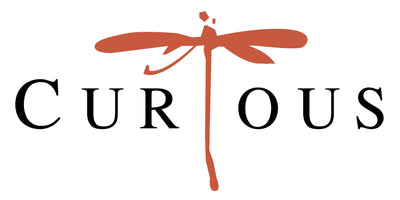Menopause & VVA - Vulvovaginal Atrophy

No one is happy about it. But there are solutions.
The vagina. This exquisite domain of women is a revered source of mystery and power. It breathes life into the planet, has been fought over for eons, and is a lush symbol of the sacred feminine. It’s alternately a source of life-bringing might and a delicate softness that requires love and pampering. It’s also a part of our bodies like any other, subject to the wear of time and experiences. The particular condition of chronological aging is unceremoniously referred to as Vulvovaginal Atrophy, Atrophic Vaginitis, or Genitourinary Syndrome - miserable, medical names for the normal conditions of aging. From here on, let’s refer to it as VVA. If you’re imagining a dusty old cave with bats flying out on the rare occasion that they’re disturbed, just let that go. VVA is a common and underreported condition that affects nearly half of postmenopausal women, a quarter of premenopausal women who are undergoing or who have undergone breast cancer treatment, and some premenopausal women who are lactating or using certain medications.
The common feature of these various situations is hypoestrogenism, or low levels of the hormone family of estrogens. In healthy, premenopausal women, levels of estradiol (the most potent estrogen) fluctuate anywhere between 10-800 pg/ml, depending on where one is in their cycle. In postmenopausal women or affected premenopausal women, estradiol levels remain at less than 30 pg/ml. So, why do low estrogen levels have this troublesome effect on our vaginas?
The unique biochemical choreography required to maintain a balanced vaginal microbiome is key, with its subsequent impact on cellular function and tissue integrity- and all of these features are influenced by the presence of estrogens. The tissue in our vaginas (and the other treasured lady-bits, the vulva and clitoris) contain receptors, which - upon recognizing estrogen molecules- dictate the production of new epithelial cells. As estrogen levels decrease, the estrogen receptors are left wanting and our bodies produce fewer vaginal skin cells. This reduction in cellular turnover leads to a thinning of the vaginal wall and vulva, less blood flow, and reduced elasticity - all things that lead to an array of discomforts, and eventually present as VVA. As there are fewer epithelial cells being born, there are also fewer dying off, which is a critical component of the vaginal biome cycle. The sloughing cells contain a sugar, glycogen, which is broken down by the primary and most honored resident of the vagina, Lactobacillus bacteria, which convert it into acid, maintaining a low pH of around four. With less glycogen for food, the Lactobacilli do not thrive, less acid is produced, and the pH of the vagina begins to rise to over 4.6 (on a logarithmic scale - it’s a lot). This has a profound impact on the health of the vagina and vulva. The high pH fails to maintain the crucial balance in the vaginal biome, creating opportunities for the growth of nefarious microorganisms. In fact, it has been shown that women with VVA contain a distinct (and less friendly) bacterial community, with a low relative abundance of Lactobacillus.

What does Vulvovaginal Atrophy look and feel like?
The symptoms are broad, and include receding labia, thinning vaginal walls, and a shortening and narrowing of the vagina. The mucosal membranes start to dry out and the little ridges in the vagina may disappear (called rugae). The tissue can become inflamed and some women develop small, smooth, red bumps along the edge of the urethra. Many women with VVA experience mild to extreme vaginal discomfort, including dryness, irritation, itching, and pain. Some find sex painful because of a lack of natural lubrication during sex, and sometimes experience vaginal bleeding following penetration. Some women experience so much dryness and tissue degradation that simply sitting or walking becomes unbearable. In fact, one study found that women with female sexual dysfunction were 3.84 times more likely to have VVA. Because VVA also affects the tissues surrounding the vagina, symptoms may also include frequent urination, UTIs and urinary incontinence. Additionally, the altered condition of the vagina fails to preserve the stable balance in the vaginal biome, leading to a greater likelihood of infection.
When experiencing any of these symptoms - in particular, a painful vagina that’s tender to the touch- first consider whether there may be something else happening. Vaginal infections are fairly common and can be caused by irregular proportions of bacteria, viruses, protozoa, or fungi. Most notably, Candida vulvovaginitis, bacterial vaginosis, and trichomoniasis can also cause ongoing vaginal and vulvar itching, pain and discharge. More rarely, cancerous and precancerous lesions can cause redness and thickened or ulcerated tissue. Another culprit might be Vulvovaginal dermatoses, a variety of skin conditions that lead to inflamed, itchy, or patchy skin of the vulva that may be caused by an overactive immune system. You might also be using a locally applied lubricant, moisturizer, or soap that is causing irritation. Of course, there’s also the possibility of sexually transmitted infection.
If you think the above are unlikely, next consider whether your estrogen levels might be low. Are you close to, beginning, or have gone through menopause? Have you undergone treatment for breast cancer? Are you lactating or taking a medication that effects female sex hormones? Do you have a medical condition that affects hormone levels? Are you under considerable stress? There are two tests a doctor can do to confirm that your vagina has entered it’s next stage of life. After confirming that you don’t have an infection, your doctor can determine whether the pH of your vagina is greater than 4.6, which is a strong indicator for VVA. And used less frequently, is the Vaginal Maturation Index, where a doctor measures the proportions of epithelial cells in the tissue layers of your vagina, with typically less than 5% of superficial vaginal epithelial cells remaining in women with VVA. Often, the combination of risk factors and symptoms will provide a clinical diagnosis of VVA without use of these tests, or indicate that you are well on your way.
If you’re fairly certain that you have VVA or VVA is emerging, let’s talk about what you can do. There are a number of approaches to rejuvenating your tissues. If your hormone levels have been temporarily affected due to lactation or medication, VVA often disappears once estrogen levels are restored. However, if your vulva and vagina have reached later-life maturity, or you’ve had treatment for breast cancer, your symptoms will most likely continue unless you choose to support your intimate tissues with a treatment strategy.
Treatments are divided into three major categories: 1) Non-hormonal lotions, lubricants, oils, and herbs; 2) Hormonal oral or local (topical) estrogen treatments; 3) Laser vaginal rejuvenation, (which only addresses some of the concerns associated with chronological aging, and deserves an article devoted to the many considerations involved in making this decision.)
The first option, non-hormonal lotions, gels, lubricants, oils, and herbal extracts, is generally the most convenient and least intrusive of the three, and potentially has the fewest side effects- depending on the ingredients used, which can be very harmful.
There have been a handful of studies showing that use of a number of plant based compounds resulted in significant improvement of VVA symptoms after regular and consistent use. The goal is to improve vaginal moisture and elasticity, by replacing and promoting normal vaginal secretions and/or balanced pH- thus addressing symptoms like itching, irritation, pain during sex- and encouraging cellular turnover in vulvar and vaginal tissue. We recommend Q Rejuvenating Serum. It contains organic ingredients, like shiitake and chamomile, to soothe sensitive vulvar mucosal membranes, sea buckthorn oil to assist in moisture retention and elasticity, and evening primrose oil to support connective tissue integrity and capillary function, just to name a few. Then there’s Curious Intimate Skincare, which contains plant-sourced therapeutic oils and botanical extracts that protect intimate tissues while providing just-the-right-amount of lubrication for sexual encounters, without the intrusion of off-putting fragrances or goopy, sticky textures.
The second treatment option includes hormonal treatments, such as low dose, topical estrogens and phytoestrogens, testosterone, or DHEA, or systematic estrogen consumed orally (Hormone Replacement Therapy). These have risks associated with them to varying degrees, particularly for those susceptible to cancer, and other medical conditions. We’ll delve further into the details of the use of hormones in coming articles and interviews with experts on sexual wellness in women.
The third option is a vaginal rejuvenation medical procedure. Energy based devices (lasers) are used to target connective tissue of the vagina. This seems to stimulate collagen production, vascularization, and improve elasticity and moisture of the vagina. While the studies so far seem to show that there is little risk associated with this treatment, the FDA issued a warning letter against the use of vaginal laser treatment, and the International Urogynecology Journal published a position stating that the technology is new and safety is unproven, with long term risks not well understood. Again, we’ll explore the question of laser and surgical vaginal treatments with experts in coming interviews.
Among the most valuable overall sexual wellness habits that support the longevity of our sexual bodies and appetites are engaging in regular sexual activity and exercise. It’s been said, in regard to libido and sexual function, “use it or lose it.” It’s a bit brutal, but data bears out the the adage. In a well considered study, in a situation with obvious potential for misdirected conclusions, women who are sexually active reported fewer symptoms of VVA when compared to women who do not regularly have sex.
Eventually, we all contend with the many conditions of aging, and VVA is simply less frankly discussed than most. Fortunately, there are solutions. When experiencing the symptoms of VVA, consider consulting your medical practitioner to rule out more troublesome issues, and we invite you to choose Curious for your intimate skincare needs.
Contributing Writer

Q Intimate Skincare Rejuvenating Serum is formulated with selected fine organic oils- all of which are well documented for use in skin rejuvenation products- and plant extracts that support elasticity and hydrate the skin, and are specifically indicated for inflamed and irritated mucosal tissues. This highly concentrated intimate skincare formula reduces wrinkling, plumps underlying skin tissue, calms inflamed tissue and makes the skin more supple and less prone to chafing and irritation.
Curious™ Intimate Skincare is the only intimate skincare available that includes an array of potent medicinal plants that rejuvenate, nourish, and protect intimate tissues while increasing pleasure, in a formula that deeply contemplates the science of a woman’s physiology in tandem with respect for a woman’s intimate needs.
Curious and its products and materials are not intended to treat, diagnose, cure or prevent any disease. All materials published by Curious are provided for educational purposes only. Please seek the advice of a qualified healthcare provider for any questions you have regarding a medical condition.
Curious is a registered trademark of the Luminary Medicine Company


Comments on this post (3)
I use the Curious Q oil and it’s helped tremendously!
— Angie
This has been the most informative piece of information about my own genitals I have ever read. Thank you so very, very much!
— Linnéa Rowlatt
l need the product
— Nagasha Angella